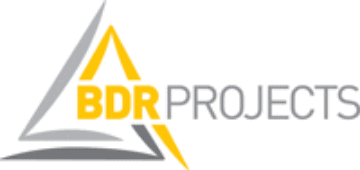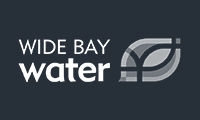Have you ever thought about incorporating a walking trail or glamping accommodation as part of your regional infrastructure planning? What about a farm stay or even a hall of fame within your local area? No? Maybe you should…
These are just some of the types of projects the Queensland Government wants to assist you with right now. But how – as a local council, a private developer, or a not-for-profit or state government agency – do you even begin to get your head around planning and developing an out of the box idea to boost visitors, dollars into the economy and securing government funding?
The rise of tourism to bolster regional infrastructure and local economies is not new, but it is certainly on the Queensland Government’s radar this year with funding available to grow tourism infrastructure across the state, with a focus on construction ready projects that will provide sustainable growth in jobs and communities.
Case Study – Regional Queensland Ecotourism Destination – Local Government Led Project
The proposed Wangetti Trail in Far North Queensland is a 76-kilometre bikeway and walking trail known as the Wangetti Trail. It will stretch from Palm Cove to Port Douglas, north of Cairns.
The idea found its legs with a joint $50,000 feasibility study launched by Cairns and Douglas shire councils. It is estimated the project will create 75 jobs during construction and 150 ongoing positions once in operation.
It is the first eco-tourism project that will see glamping and cabins on national park in Queensland and the Queensland Government announced its support for the project in May this year. Traditional owners have been consulted to help with the design and the Queensland Government has declared traditional owners will have recognised leadership, responsibilities and management roles on their land and the Wangetti Trail.
The State government has published on its department website estimated economic impact, possible visitor numbers and a list of benefits including significant regional economic growth, develop skills and increase diversity of jobs in the region and increase attractiveness and liveability in the region.
State and local governments, private developers, and landholders are getting on board with opportunities to develop infrastructure and services to create sustainable new jobs, attract higher visitation, support tourism growth and build the economy.
So, we’ve got you thinking that if everything aligned, and you found an idea in your local area that could work, this Queensland Government funding would be great. But why do so many groups fail to get government funding across the line?
Project Viability and Securing Funding
When seeking government funding or leveraging public sector investment there is often extensive work for proponents to demonstrate affordability and project viability, and shore up investment.
Developing the proposal and business case to secure the necessary approvals are two of the first steps towards making an idea a reality. Elements to consider when developing a preliminary evaluation or business case include:
- Concept design and project scope
- Funding sources
- Estimates for costs and revenues
- Approvals
- Legislative and policy frameworks
- Environmental and social impacts
- Land tenure
- Stakeholders
- Public interest assessments
- Identification of risks.
These elements, combined with a cost benefit analysis, become the basis of your proposal.
Lack of Data for a Strong Business Case
Funding sources often rely on a strong Economic Impact and Cost Benefit Analyses to enable them to make an informed decision about whether to proceed further with the project. The analyses rely on thorough consideration of the monetary value place upon all costs and benefits of a project.
In regional areas and outback locations, often data required for a robust Cost Benefit Analysis is inadequate. This presents a challenge for projects as sound economic and marketing strategies are built on good research and data.
So, you’ve got your ecotourism idea. How do you obtain relevant data such as current and forecast visitor numbers, visitor spend, average length of overnight stay to support your, or your client’s, project proposals?
Recently, we have been preparing preliminary evaluations for a client for its tourist-related infrastructure and it has encompassed a range of areas to glean the right information for planning and developing the project. These include the following consideration:
- Australian Bureau of Statistics and Tourism Research Australia provide Tourism Regional and Local Government area profiles, visitor survey results, forecasts, population and demographic data. Search for data relevant smallest unit available (town, region, Local Government Area).
- Other reports for projects in the town or region (or more broadly if required) for assumptions or data sources referenced.
- Case-studies of similar projects, including publically available data, but also considering contacting a range of relevant project proponents and operators.
- Comparison of ‘before and after development’ visitor numbers and estimate the contribution of any increases that may be attributed to the development in other similar areas.
- Local governments can be a source of a range of data from their assets, or provide recommendations for other sources.
- Visitor Information Centres play an important role in Queensland’s tourism industry and record monthly visitor numbers.
- Queensland Parks and Wildlife Services collects a range of camping and day-use area data (such as toilet door counters) which may be another indicator of local traffic.
- Traffic counters on relevant roads near the proposed site.
Where tourism data isn’t available, the qualitative inputs and the narrative become an important aspect of the analysis. Taking the reader on a journey can be the difference between a shelved proposal and one that makes it through the next gate.
The Queensland Government has funds it wants to spend on tourism. The Growing Tourism Infrastructure Fund, the Attracting Tourism Fund, the Regional Tourism Infrastructure and Experience Development Program and Outback tourism infrastructure funding are all available to proponents with the right idea and the right business proposal at the ready. The Government even has a helpful quiz to narrow your search for resources, programs and services available to you.
If you have an idea for your local area but finding the process too time-consuming or logistics of putting together the data not your strong point, let the BDR Projects experts help you put it all together. We assist clients with all facets of planning, reporting and the entire project lifecycle and assist many clients secure funding for their projects.







